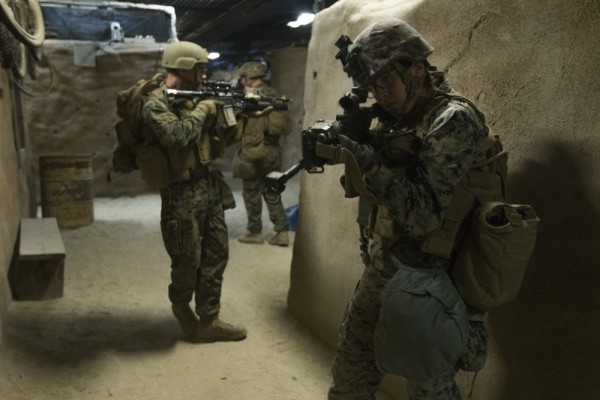

Widespread sexism and gender bias in the Marine Corps hasn’t stopped hundreds of female Marines from striving for the branch’s most dangerous, respected and selective jobs.
Six years after the Pentagon officially opened combat roles to women in 2013, 613 female Marines and sailors now serve in them, according to new data released by the Marine Corps.
“Females are now represented in every previously-restricted occupational field,” reads a powerpoint released this month on the Marine Corps Integration Implementation Plan (MCIIP), which notes that 60% of those female Marines and sailors now serving in previously-restricted units joined those units in the past year.

A slide from the Marine Corps Integration Implementation Plan (MCIIP) released in December 2019(U.S. Marine Corps)
Despite the rapid growth, an important distinction must be made in the data. Though there are 613 female Marines and sailors serving in previously-restricted units, only 231 of those female Marines have earned a previously-restricted military occupational specialty (MOS).
This means there are hundreds of female Marines who are serving in combat units, such as infantry or artillery, but who are technically not trained as infantrymen or an artillery cannoneers.
For example, there could be a female Marine whose MOS is 0621, field radio operator, not 0311, infantry rifleman, but who is nonetheless attached to an infantry unit to perform a vital role there.
Does this mean female Marines who have an MOS that was not previously restricted are not seeing as much combat as other Marines in a combat unit? Not necessarily, explained Maj. Craig Thomas, a spokesman for Manpower & Reserve Affairs at Marine Corps Headquarters.
“If you belong to a unit, regardless of your MOS, you’re a member of that team and you’re going to be utilized in the best way possible to support the mission,” Thomas told Task & Purpose. “Every Marine is a rifleman regardless of your MOS. Whether you’re comms, logistics, infantry, whatever unit you belong to, you’re going to serve and achieve that mission.”
So if a female Marine radio operator is attached to an infantry unit, they might be setting up comms with battalion staff or out on patrol with an infantry platoon. That combat exposure wasn’t officially possible for women before infantry and other combat units opened up to them.
That said, out of those 613 Marines and sailors in previously-restricted units, there are also 231 female Marines who have earned a previously-restricted MOS, like infantry, artillery, etc. Those numbers are also growing fast: out of the 231 female Marines who earned a previously-restricted MOS, 89 of them (39%) earned them in the past year.
One of them was Lance Cpl. Alexa Barth, who last month became the first female Marine in history to graduate the grueling Basic Reconnaissance Course, thereby earning the coveted MOS 0321, or Reconnaissance Marine.
According to the powerpoint, 83 female Marine officers in total have attempted to earn previously-restricted MOSs, 52 of whom were successful. The most popular fields were artillery and combat engineers, the powerpoint said.
On the enlisted side, 387 female Marines attempted a previously-restricted MOS, 179 of whom were successful. The most popular fields for them were infantry, assault amphibious vehicles and artillery.
The Marine Corps also calculated the attrition rates for both male and female Marines at previously-restricted MOS schools since 2015. For male officers, the attrition rate was 13.5%, while female officers dropped out at a rate of 29.5%. On the enlisted side, 11.2% of male Marines did not make it through their MOS school, along with 23.9% of female Marines.
As shown by a recent investigation of Marine Corps culture, female Marines face resistance from men across the Corps, from basic training onward. But in the powerpoint, the Corps lays out that sustainment, the fifth and final phase of the MCIIP, “is focused on ensuring that career progression for female Marines is equitable (true opportunity, without undue advantage).”
Specifically, sustainment will involve measuring female Marine performance among their male peers; looking for outliers from the normal distribution; and understanding any implications the data might present. Some of the takeaways from that effort may not emerge for several years as the Corps gathers relevant data, the powerpoint explained.
